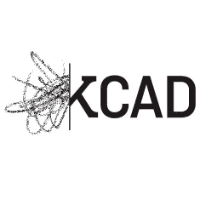Website www.kcad.edu Founded 1928 | Established 1928 (1928) Number of students 1,459 | |
 | ||
Notable alumni Similar Ferris State University, Kendall College, Grand Rapids Communi, Aquinas College, Cornerstone University Profiles | ||
Ferris state university kendall college of art and design um uli grbj com
Kendall College of Art and Design (KCAD) is a NASAD-certified college of art and design located in downtown Grand Rapids, Michigan, United States. As a part of Ferris State University, KCAD is also certified by The Higher Learning Commission of the North Central Association of Colleges and Schools.
Contents
- Ferris state university kendall college of art and design um uli grbj com
- Enrollment
- Undergraduate programs
- Graduate programs
- Continuing education
- Early years
- Post war
- Back to downtown
- Merger with Ferris State University
- Continued growth
- Highlights
- Woodbridge N Ferris Building
- References
Enrollment
There were 1,459 students enrolled at KCAD for the Fall 2013 semester.
Undergraduate programs
Graduate programs
Continuing education
Early years
KCAD was incorporated in 1928 by a provision in the will of Helen M. Kendall, the second wife of Grand Rapids furniture designer David Wolcott Kendall. The David Wolcott Kendall School of Art was housed in the old Kendall homestead at 145 Fountain Street, now known as Heritage Hill. The school offered a two-year program in the fundamentals of art and by the mid-1930s was making a name nationwide as the heir to the legacy of the craftsmen who built the Grand Rapids furniture industry.
Post-war
The postwar boom brought a wave of new students, including returning veterans. New wings were built on two sides of the Fountain Street building, and a new library housing Kendall’s personal collection was opened to the public in 1945. In 1947 the school’s name was changed to Kendall School of Design, reflecting the school’s national reputation in furniture design and home merchandising. In 1961, having outgrown the Fountain Street location, the school purchased a home and land at 1110 College Avenue NE. Through the ‘60s and ‘70s Kendall expanded its programs and campus, adding two new buildings at the College Avenue location. A foundation program for all students was established, and in 1977 an academic program led to the first Bachelor of Fine Arts degree. In 1981, Kendall College of Design was certified as a baccalaureate degree-granting institution and was accredited by the North Central Association of Colleges and Universities.
Back to downtown
Due to increasing enrollment, a committee of trustees, faculty, staff, and students began examining sites where the burgeoning school could relocate. The search ended just a block from the school’s original location in the old Kendall homestead. Built just after the turn of the century as exhibition space, the Manufacturers Building offered room for expansion. Kendall bought the building in ‘81 and moved its operations back downtown in the fall of ‘84. In 1987 the name of the school was changed to Kendall College of Art and Design (KCAD) to reflect the school’s status in granting four-year degrees and the equal importance of both art and design in the college's curriculum.
Merger with Ferris State University
In 1995 it was becoming apparent that to maintain the momentum of the college’s reputation for art and design education, and to provide the technology and services necessary in higher education, further growth was needed. At the same time, Ferris State University was exploring ways to expand from its geographic area, centered for most of the last century in Big Rapids, Michigan. In 1996, the schools embarked upon a four-year process of affiliation that culminated in a complete merger in the 2000–2001 academic year.
Continued growth
Under President Oliver Evans, the school purchased the old Interstate Building, a turn-of-the-century loft building on the same block, and connected it to the Manufacturers Building with a three-story atrium. The new facility opened in May 1998, is located at 17 Fountain Street NW, and houses the majority of KCAD's administrative offices, classrooms, and dedicated work spaces. In the early 2000s KCAD acquired and began renovating the Historic Federal Building at the corner of Pearl St. and Division Ave. in downtown Grand Rapids. The building opened in the Fall of 2012 and awarded Gold LEED certified. The Federal Building, now known as the Woodbridge N. Ferris Building, houses 3,500 sq. ft. of exhibition space, classroom, administrative, and public lecture spaces. It also hosts the Material ConneXion Library, the largest physical academic collection of material samples from the Material ConneXion organization in existence. Also in the early 2000s KCAD received a grant from the Herbert H. & Grace A. Dow Foundation to establish a dynamic, transdisciplinary learning center that explores the potential of linking design, innovation, and technology. The Dow Center, better known as the FlexLab, is an open-source area where students can learn how to use contemporary digital processes such as 3D printing, LASER etching and cutting, vinyl cutting, large format inkjet printing, CNC machining, and plasma cutting.
Highlights
Woodbridge N. Ferris Building
The historic five-story Beaux Arts building, now part of the Kendall campus, was constructed in 1909. It was added to the National Register of Historic Places in 1974 and served as a federal building until 1981. At that time, the City of Grand Rapids renovated the first three floors of the building for the Grand Rapids Art Museum. Following the move of the museum in 2007, the building sat vacant until Ferris chose to redevelop the building to provide additional space for Kendall. The formation of a public/private partnership assisted Ferris in its plan to redevelop and adaptively reuse all five of the floors in accordance with federal and state preservation standards. The fully restored and renovated building provides a cultural/arts center for Kendall. The building has garnered multiple industry awards, including the Governor’s Award for Historic Preservation and the Michigan Historic Preservation Network award, as well as LEED Gold Certification by the U.S. Green Building Council.
